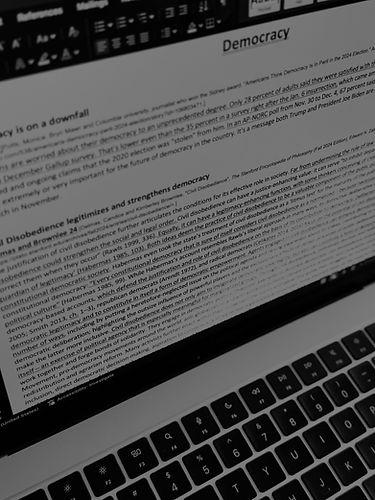A Guide to Mastering the Jan/Feb Resolution
- Brendan Finnegan
- Nov 26, 2024
- 3 min read
Updated: Nov 28, 2024

The potential Jan/Feb topics have been out for a while, and all I’ve heard are complaints or fear. For those of you who haven’t seen the three options, here they are:
Resolved: The United States ought to formally recognize one or more of the following: Iraqi Kurdistan, the Republic of China, the Republic of Somaliland.
Resolved: The United States ought to remove all or nearly all of its economic sanctions on one or more of the following: Islamic Republic of Iran, Democratic People’s Republic of Korea, Bolivarian Republic of Venezuela.
Resolved: The United States ought to become party to the United Nations Convention on the Law of the Sea and/or the Rome Statute of the International Criminal Court.
Interesting, I know. I’ve decided to think of this as 1-on-1 policy debate, which has prompted a lot of questions and concerns about what debating these topics might look like. In this article, I’m going to break down how prep and debates may take shape to help you navigate this new and unprecedented terrain.
On the national circuit, I don’t expect much change since many debaters already use plans and subsets. These resolutions honestly feel like flashbacks to every WANA subset debate I’ve ever seen—Turkey, Syria, Iraq, the Gulf, CENTCOM, you name it. If anything, these topics feel tailor-made for the circuit, like the NSDA’s way of leaning into circuit norms while also trying to kill the countless, frivolous T debates from last year by explicitly allowing subsets. With that said, I don’t foresee significant changes to strategies at the national level.
The real shake-up comes for local and traditional circuits. How will these debaters adapt? After close consideration, it’s clear that everyone—especially on the neg—will need to rethink their approach, at least to some extent.
To make this easier, I’ve broken down prep into three parts: 1) Affirming, 2) Generic Negating, and 3) Specific Negating. For progressive debaters, this is likely familiar territory, but it’s a shift that everyone will have to embrace.
Let’s start with affirming. On policy-esque resolutions like these, the best strategy will be to pick a subset and stick to it. For instance, on the recognition topic, affirming might mean focusing on China and explicitly stating in a plan text that you won’t defend lifting sanctions on other countries. This keeps things focused, avoids unnecessary offense, and is semantically supported by the “or” in the resolution. This kind of strategic narrowing will lead to a significant shift in debate style on local and traditional circuits, where the broader scope of topics typically keeps rounds more general.
With affirming requiring a specific focus, negating becomes a question of managing prep burden. This leads me to Generic Negating. In progressive debate, this includes arguments like the 50 States Counterplan, politics DAs, or Ks—responses that can apply broadly without requiring a deep dive into every possible aff. But what about traditional debaters unfamiliar with progressive styles? Generic negation works for you too. You’ve probably already done it without realizing it. This could mean relying on a clear value and criterion, like Hobbes’ Social Contract or Political Realism, to argue that we should negate any subset for broader philosophical reasons. Or you could use broad utilitarian claims, like arguing that lifting economic sanctions in general leads to economic instability. This approach keeps prep manageable while still engaging with the aff.
The other approach is Specific Negating. This involves crafting NC positions tailored to specific affirmatives. For example, if the aff supports recognizing Iraqi Kurdistan or the Republic of China, your neg might argue against this with specific disadvantages like regional instability or diplomatic backlash. This strategy is harder—it demands more research and quick adaptation round-to-round—but it’s also more rewarding, especially in front of experienced judges who value detailed arguments. Many progressive debaters already do this, but for traditional debaters, it might feel like a heavier lift. A middle ground could involve blending specific and generic strategies: using the same impacts and internal links but swapping out specific links to adapt to different affs. It’s more work, but it leads to stronger, more in-depth debates.
Ultimately, these unprecedented topics show that the NSDA is respecting the growth of debate, particularly at the TOC level. For local and lay circuits, however, this might feel like a nudge toward 1-on-1 policy debate, which could cause growing pains. But the fear and frustration surrounding these resolutions are just part of the challenge. If anything, this is a chance to innovate and grow as a debater. Instead of stressing over what’s ahead, embrace the change, prep strategically, and remember that debate is supposed to be fun. Good luck!

Comments